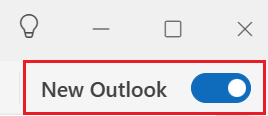Kontakte, Kalender, E-Mails und Aufgaben exportieren und sichern
Create an Outlook backup file to save and export email messages, contacts, calendar info and tasks. Then import your backup to a new email plan, email service or a new version of Outlook. The export won’t include meta-data such as folder properties (views, permissions and AutoArchive settings), message rules and blocked sender lists. Please note that Microsoft no longer supports versions of Outlook older than 2016.
Wählen Sie basierend auf der E-Mail-Plattform, die Sie verwenden, das entsprechende Register aus.
- Melden Sie sich bei Outlook online an. Verwenden Sie die E-Mail-Adresse und das Passwort für Microsoft 365. (Ihr GoDaddy-Benutzername und -Passwort funktionieren hier nicht.)
- Wählen Sie ganz links auf der Seite
 Kontakte.
Kontakte. - Wählen Sie Kontakte verwalten und anschließend Kontakte exportieren.
- Wählen Sie aus, ob Sie alle Kontakte oder aber nur Kontakte aus einem bestimmten Ordner exportieren möchten, und wählen Sie dann Exportieren aus.
Your contacts will be saved as a .csv file, which you can import to other email apps (like Gmail) or other versions of Outlook.
- Öffnen Sie Outlook.
- If you’re in new Outlook, revert to classic Outlook. In the upper-right corner, turn off the New Outlook toggle. You might have to confirm that you want to revert.

- Wählen Sie oben links Datei aus.
- Wählen Sie Öffnen und Exportieren und dann Importieren/Exportieren aus.
- Wählen Sie In eine Datei exportieren und dann Weiter aus.
- Wählen Sie Outlook-Datendatei (.pst) und dann Weiter aus.
- To export the entire mailbox, select the name of the email account, and then continue to the next step. Or, to only export your calendar, contacts or tasks, select the folder you want to export. You can only export 1 type at a time, so you must repeat these steps to export contacts, calendars and tasks individually.
- Next to Include subfolders, make sure the checkbox is selected, and then select Next.
- To choose where to save the Outlook Data File (.pst), select Browse. Enter a file name, and then select OK.
- If you're exporting to an existing Outlook Data File (.pst), under Options, specify what to do when exporting items that already exist in the file.

- Wählen Sie Fertigstellen aus.
- The export begins immediately unless 1 of the following scenarios apply:
- When the Create Outlook Data File dialog appears, enter a password in Password and Verify Password, and then select OK. Otherwise, to continue without setting up a password, leave the password fields blank, and then select OK.
- If you're exporting to an existing Outlook Data File (.pst) that's password protected, in the Outlook Data File Password dialog, enter the password, and then select OK.
- Öffnen Sie Outlook.
- If you're in the new version of Outlook, revert to the legacy version of Outlook. Select Outlook, and then Legacy Outlook. You might have to confirm that you want to revert.

- Wählen Sie Datei und dann Exportieren aus. Das Fenster In Archivdatei exportieren (.olm) öffnet sich.
- If you don't see Export, select Tools, and then Export instead.
- Select what you want to export. By default, all items are selected.
- To export any of these types individually, select the checkbox next to each item.

- Wählen Sie Weiter .
- Choose where on your computer you'd like to save the file, enter a file name, and then select Save. Your items will be exported.
- Wählen Sie Fertigstellen aus.
Ähnlicher Schritt
- Nach dem Exportieren Ihrer Outlook-Daten in eine Sicherungsdatei können Sie sie in Outlook importieren.
Weitere Informationen
- Find out how to export a calendar to a .ics file from Microsoft.
- Weitere Informationen zum Ex- und Importieren von Dateien in Outlook finden Sie bei Microsoft.
- Check out this article from Apple to learn how to import or export mailboxes in Apple Mail on Mac.